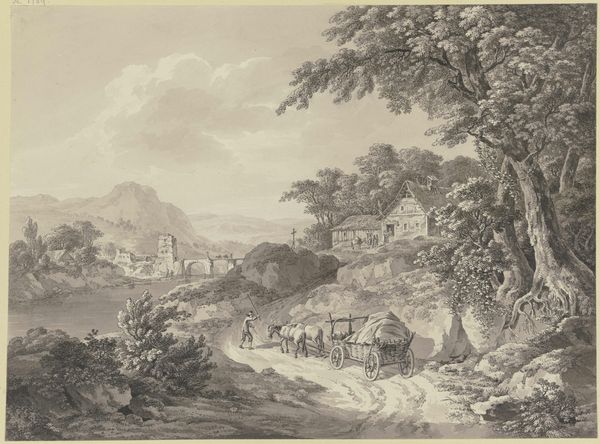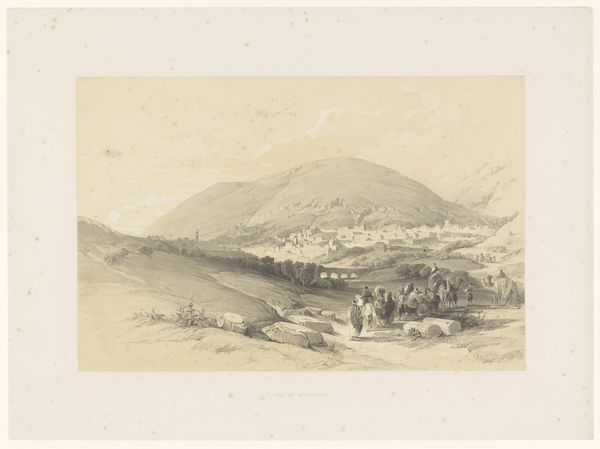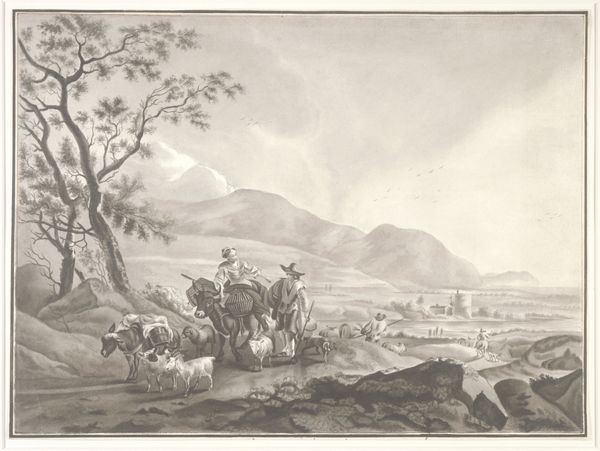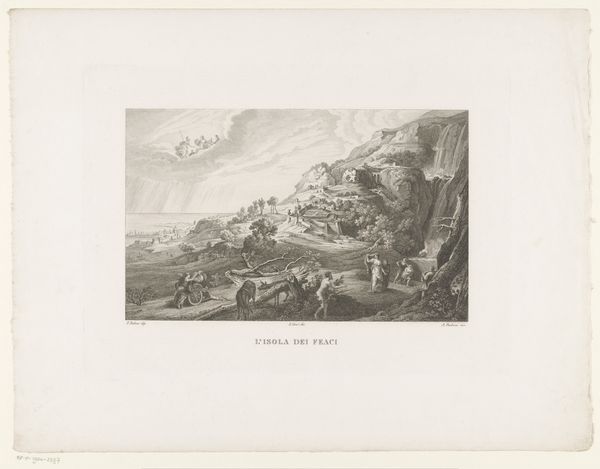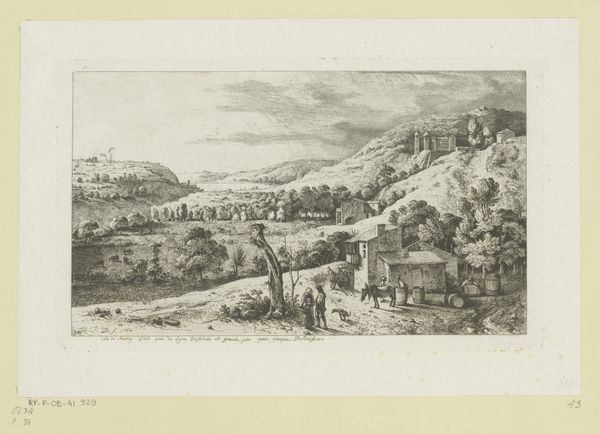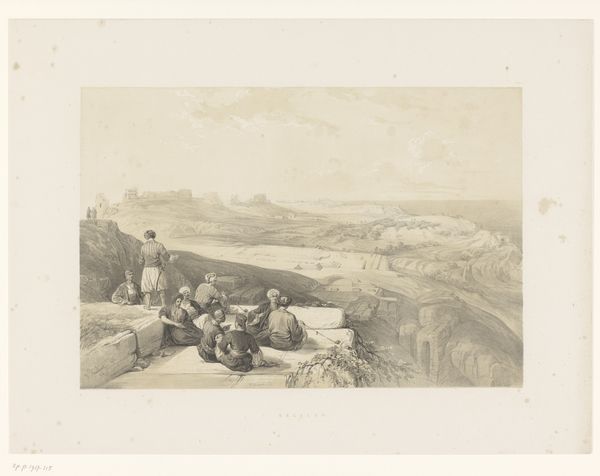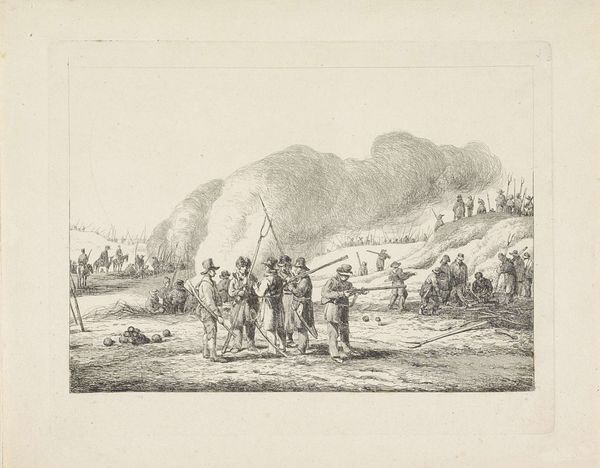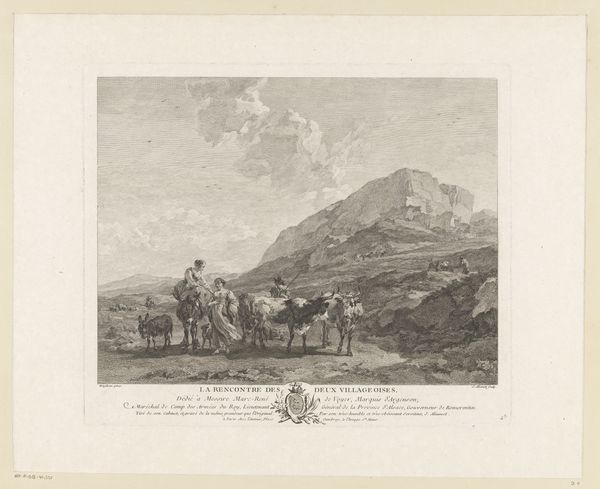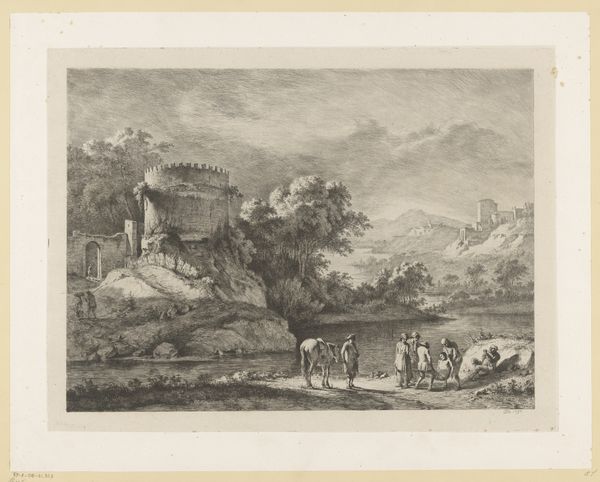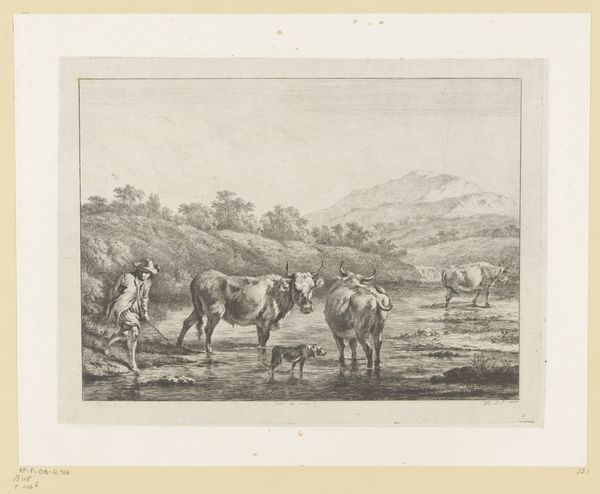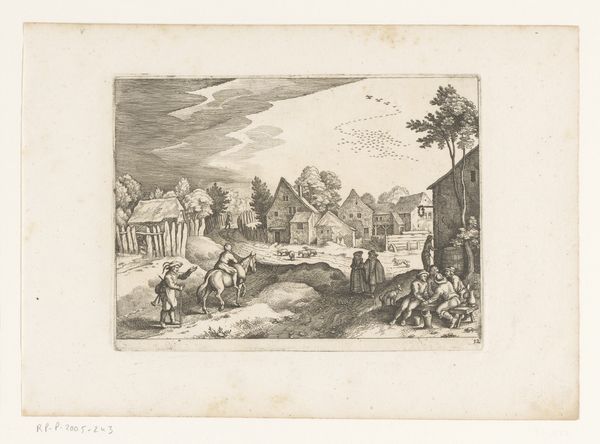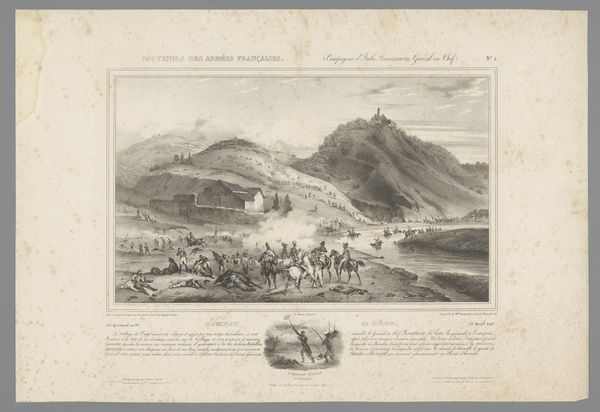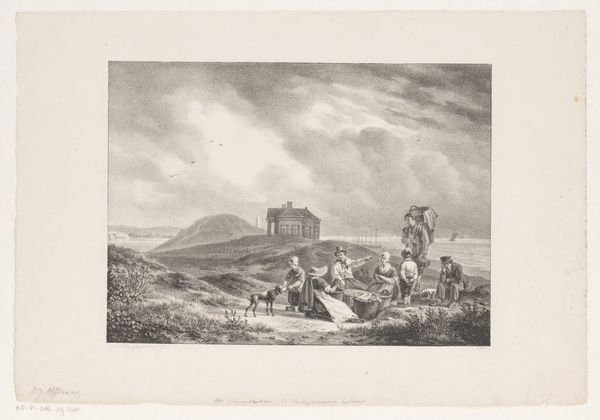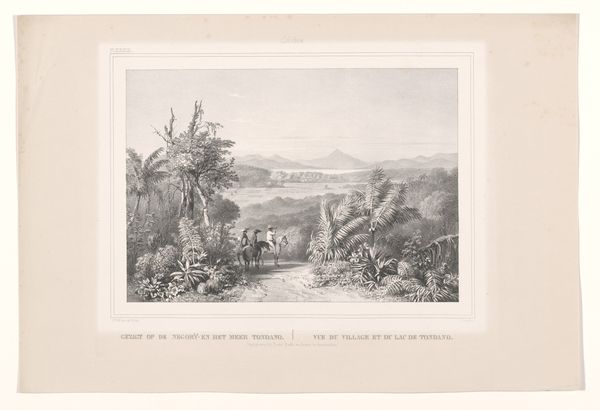
Dimensions: height 394 mm, width 530 mm
Copyright: Rijks Museum: Open Domain
Curator: Here we have François Stroobant’s 1852 etching, “Travelers Resting by Jacob's Well in Sichem," currently held at the Rijksmuseum. Editor: It's rendered with such delicate lines! There's a hazy quality that gives it an almost dreamlike atmosphere. It looks so muted and almost monotone. Curator: Yes, the romanticism really comes through, doesn’t it? Stroobant was part of a wave of 19th-century European artists who engaged with what we now call Orientalism. We must remember the political dimensions of representing these lands and cultures. This print presents a particular vision, filtered through European eyes for a European audience. Editor: The process of etching is interesting to consider here. Think of the labour, the time taken to produce such intricate details using a metal plate, acid, and then the press… It makes you consider the print not just as an image, but as a commodity. Were these types of artworks produced as simple souvenirs from traveling? Curator: Many such works circulated as illustrations in travel books, feeding a European appetite for depictions of the ‘Orient.’ Artists often took liberties with what they depicted, reinforcing certain stereotypes. The presence of soldiers here hints at European involvement in the region too, reminding us that this idyllic scene exists within a larger context of colonial power dynamics. Editor: The choice of subject matter feels intentional. Wells would always have been significant community hubs throughout history. I wonder if the gathering around Jacob's Well is also implying notions of resource management? Access to something as basic as clean drinking water has always been contentious throughout human history. Curator: An astute point. Depicting it becomes symbolic then, potentially evoking biblical narratives and reaffirming a Western-centric view of the Holy Land. But I appreciate your noticing how a material analysis makes us aware of consumption and audience, shifting away from only discussing purely aesthetic qualities. Editor: Right, seeing the art as embedded in specific systems of labor and meaning, and not divorced from these contexts helps reveal even more complexity, I believe. Curator: Indeed, it provides additional dimensions to think about when engaging with this historical print. Editor: Precisely, turning a single image into something multi-faceted!
Comments
No comments
Be the first to comment and join the conversation on the ultimate creative platform.
